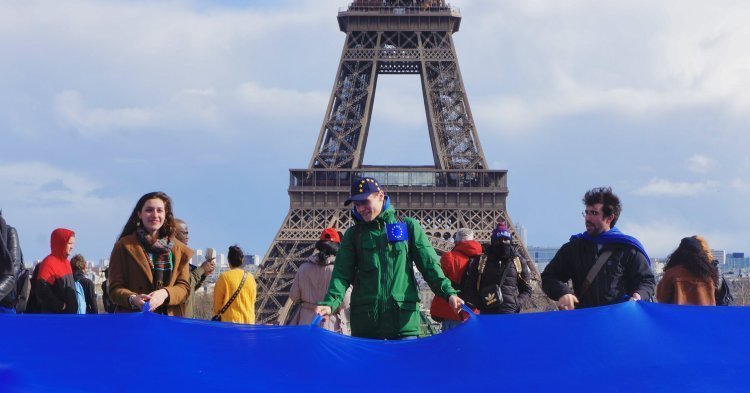1. Historic participation of European citizens
This election was marked by the participation of a record number of Europeans in these elections. (Editor’s note: In 1994, when the turnout, at 56.67%, last was higher than in 2019, the EU’s population was around 350 million. Notably thanks to enlargement, in 2019 the EU has a population of more than 500 million.) Polling agencies hadn’t anticipated this regain of citizens’ interest in the elections to the European Parliament. In France, 50.1% of voters went to the polls. This represents an increase of 8 percentage points, that is, 4 million more voters than in 2014.
Likewise, Europeans overall mobilised to make their voice heard, with participation rising to 50.8% in the EU as a whole. That’s a tally not seen since the 1994 European elections, both in France and at the European level.
This trend displays the increasing interest of citizens in European issues. It manifests the big expectations and aspirations of voters who want the EU to find solutions to numerous big global challenges. Finally, the themes that marked the campaign, like Brexit, the migration question and the fight against global change, revealed an unprecedented emergence of a European public opinion.
2. A Parliament that can change Europe
Despite Rassemblement National’s big national-level score in France with 23.3% of votes, and that of their Italian allies, the nationalist wave in Europe didn’t take place. On the contrary, while the two main groups in the European Parliament, the centre-right and the social democrats, were weakened by this election, the strengthening of the liberals and democrats on the centre and the breakthrough of the Greens illustrate a transformation of the European political landscape.
The grand coalition of the European Parliament, habitually formed between the two big groups of the centre-right and centre-left, can’t bypass the centrist ALDE group where, among others, the MEPs from the French Renaissance list (associated with Emmanuel Macron’s La République en Marche) sit.
And undoubtedly, we need to take into account the big progress of the Greens in France, in Germany and in many countries of the EU, when composing a strong majority in the European Parliament. The equilibrium of this coalition thus moves to the centre-left, taking a strong green colour, which puts an end to domination by the European People’s Party. In France, even if Rassemblement National celebrated victory, lists with a pro-European programme recorded more than 60% of the votes.
Thanks to mobilisation of European voters, the new composition of the European Parliament paves the way for a change of course. Indeed, candidates who rejected the status quo and who want to give new breath to Europe are entering the European Parliament in large numbers. These results send a clear message: the EU needs to do more to respond to the main concerns of Europeans and to big global challenges. The need for Europe has rarely been as strong.
3. Young people created a surprise
On 26 May, it was young people who created a double surprise at the European elections. Firstly, through their significant mobilisation to vote, with the increase in turnout in France like in many other countries. Secondly, thanks to their actions for climate across the continent, they could bring the environment to the heart of the debate, and that across the whole political spectrum, concretising this engagement at the ballot boxes.
Among 18-to-24-year-olds, the turnout rate in France was 39%, an unexpected 14-point increase compared to the 2014 election. Among 25-to-34-year-olds, we can observe the same thing, with a turnout of 40%, compared to 27% in 2014. And this regain of participation showcases the massive support of young people for environmentalist parties. In France, the green party EELV convinced 25% of 18-to-24-year-olds. It’s the largest party among young people, which is a complete change of paradigm from 2014 when Front National won 28% of votes from young people of the same age. The same phenomenon occurred among 25-to-34-year-olds, of whom 28% voted for EELV, against 20% for Rassemblement National and 17% for the Renaissance list.
This movement didn’t only take place in France. In Germany, the situation was similar, and among young people Greens took the second place.
In the European elections, both in France and the rest of Europe, young people made the choice to concretise their mobilisation for climate at the ballot boxes. Far from disinterest in politics that often marks this age group, young people demonstrated their interest in European and global topics. They voted to state loudly and clearly that the EU is the only actor that can respond to the great challenges of our era, including environmental protection, and that we need to give it the means to act in the next five years. This time, young people also made the choice to send pro-European candidates to the Parliament to represent them. They chose hope of a better Europe, rather than a nationalist international.
On 26 May, young people chose Europe. Europe must not let them down.


Follow the comments: |
|
